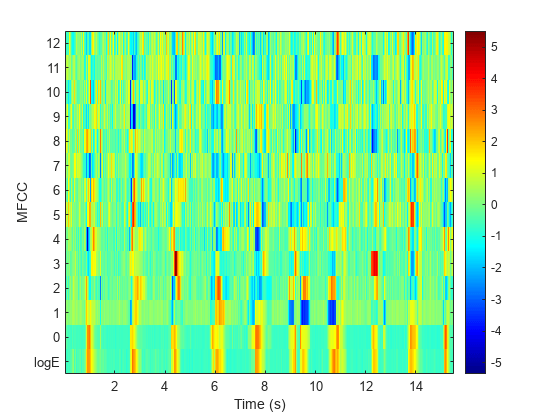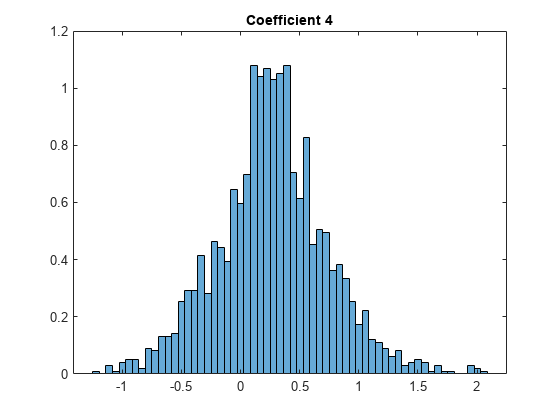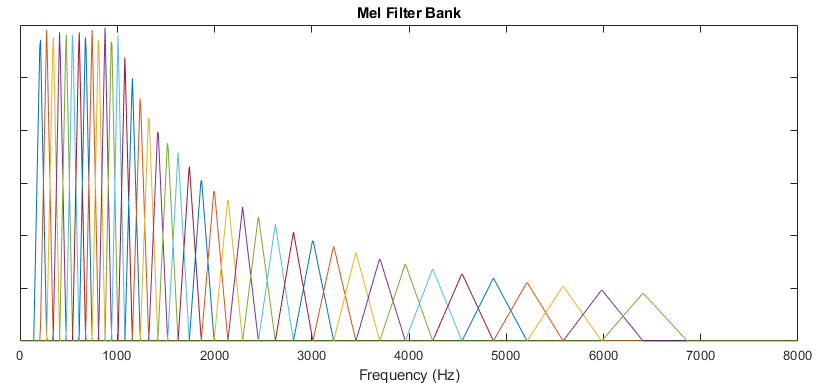mfcc
Extract MFCC, log energy, delta, and delta-delta of audio signal
Syntax
Description
coeffs = mfcc(___,Name=Value)
Example: coeffs = mfcc(audioIn,fs,LogEnergy="replace") returns
mel-frequency cepstral coefficients for the audio input signal sampled at
fs Hz. The first coefficient in the coeffs
vector is replaced with the log energy value.
[
also returns the delta, delta-delta, and location of samples corresponding to each
window of data. You can specify an input combination from any of the previous
syntaxes.coeffs,delta,deltaDelta,loc] = mfcc(___)
mfcc(___) with no output arguments plots the
mel-frequency cepstral coefficients. Before plotting, the coefficients are
normalized to have mean 0 and standard deviation 1.
If the input is in the time domain, the coefficients are plotted against time.
If the input is in the frequency domain, the coefficients are plotted against frame number.
If the log energy is extracted, then it is also plotted.
Examples
Input Arguments
Name-Value Arguments
Output Arguments
Algorithms
References
[1] Rabiner, Lawrence R., and Ronald W. Schafer. Theory and Applications of Digital Speech Processing. Upper Saddle River, NJ: Pearson, 2010.
[2] Auditory Toolbox. https://engineering.purdue.edu/~malcolm/interval/1998-010/AuditoryToolboxTechReport.pdf




